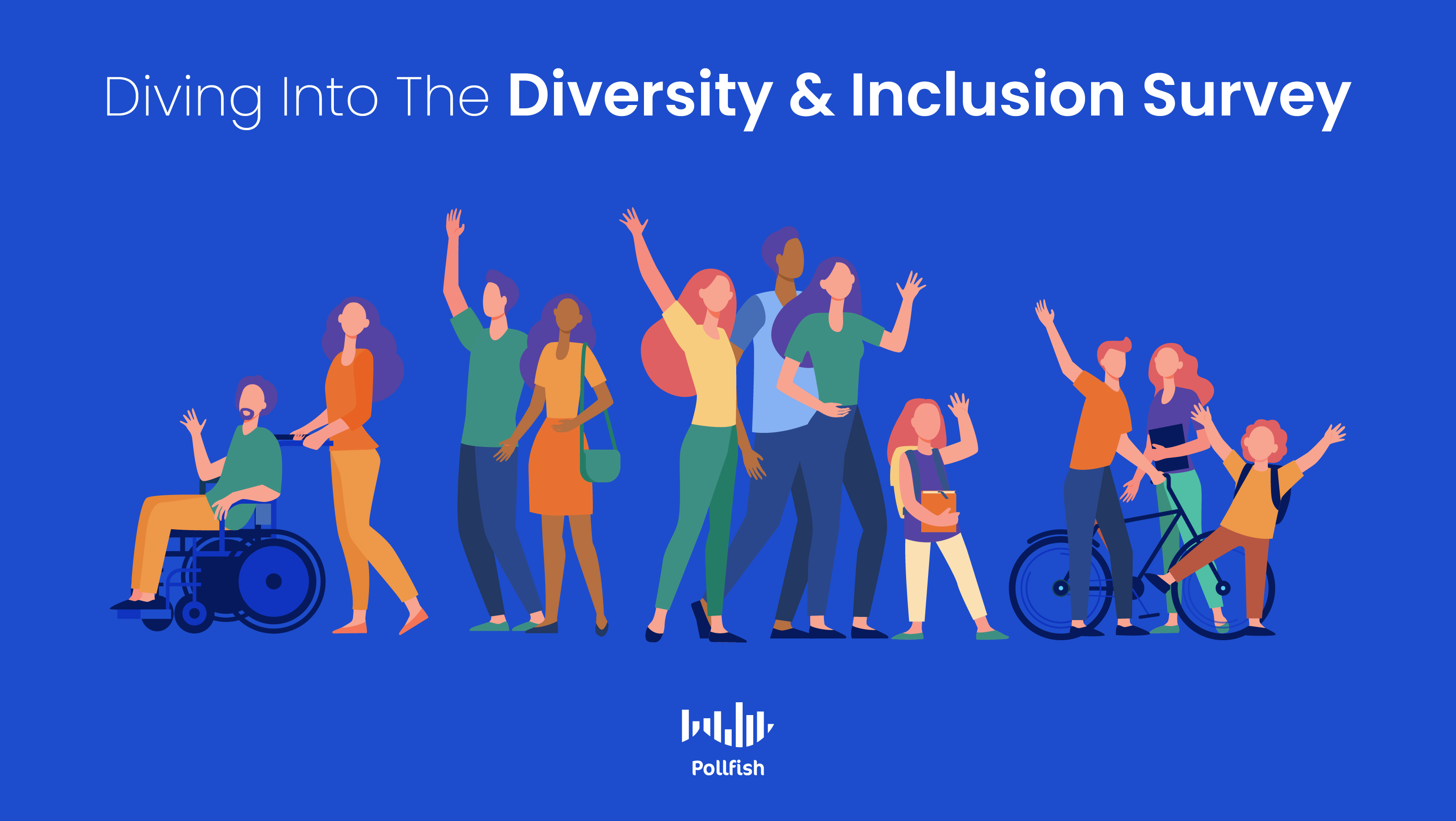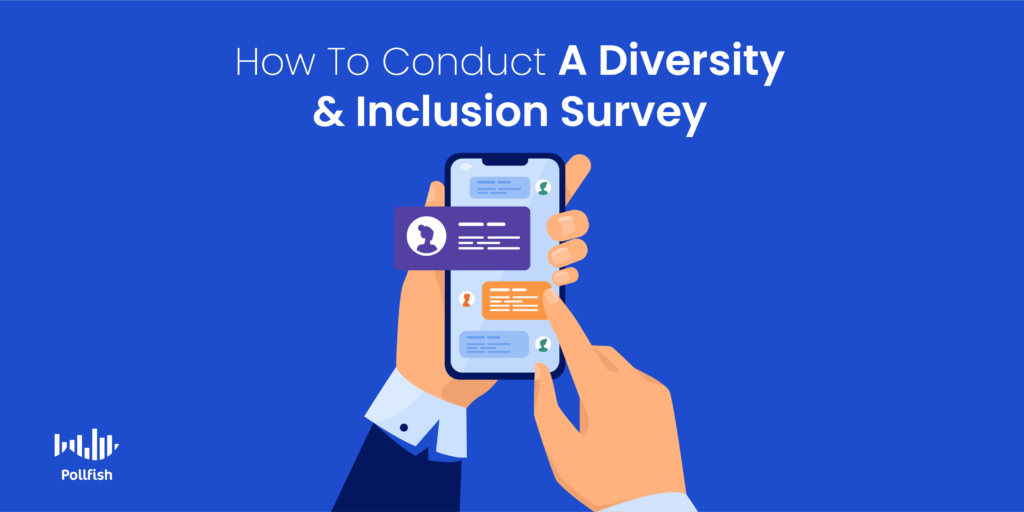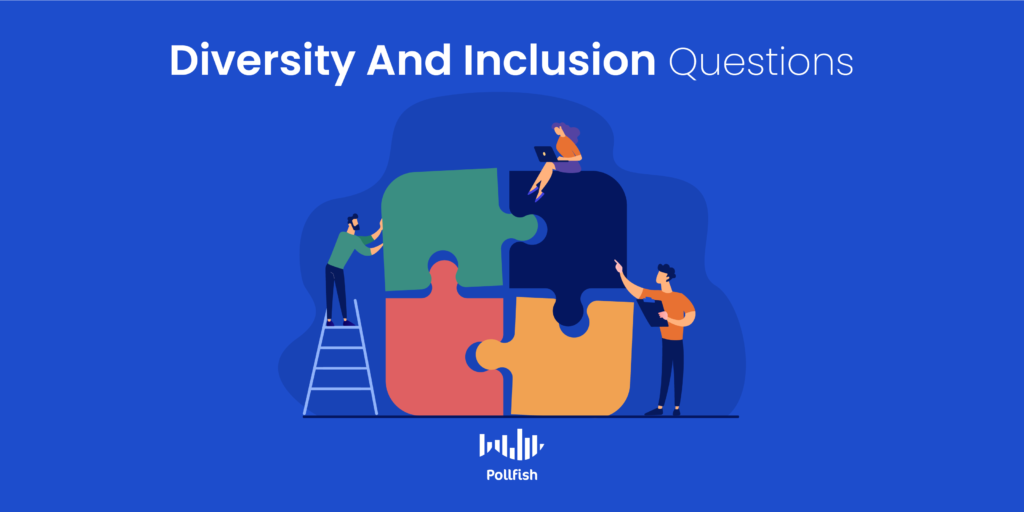Diving into the Diversity and Inclusion Survey

Businesses conduct diversity and inclusion surveys to improve their work culture and the overall employee experience. They do this by gauging their staff’s perspectives and making possible improvements to the general company culture and structure.
According to McKinsey, organizations within the top diversity quartile have 21% sound financial performance than organizations in the bottom quartile. Diversity also correlates with higher innovation rates.
A practical starting point to foster an inclusive and diverse environment within a workplace relies on conducting an organization-wide diversity and inclusion survey to gather the employees’ feedback on this matter.
By garnering and analyzing this data, you can better comprehend the current organization status and create a clear path to cultivating D&I.
This article expounds on the key characteristics of diversity and inclusion surveys, their importance, and how to carry out one effectively.
Defining the Diversity and Inclusion Survey
The diversity and inclusion survey is a kind of employee feedback survey, part of the Voice of Employee (VoE) studies that assess employee groups and their experiences in their company. These surveys measure diversity, inclusion, and fairness at your workplace.
With diversity and inclusion surveys, you can ensure that all people are treated justly and equally, regardless of their gender, age, sexual orientation, race, ethnicity, disability, religion, or other factors.
Ultimately, this helps build an inclusive culture that drives organizational effectiveness. Essentially, diversity and inclusion surveys enable you to:
- Identify specific groups who aren’t getting the same experience as others
- Take appropriate initiatives to promote inclusion and diversity
- Review procedures and policies and set relevant groups as appropriate
- Recognize if the bias is unconscious
All in all, diversity and inclusion surveys help you to track your company’s progress towards creating an environment where people are accepted for their beliefs and respected for their values. For example, if your survey shows that workplace sentiments have increased, that means positive progress has been made towards diversity and inclusivity at work.
The Key Characteristics of the Diversity and Inclusion Survey
These surveys give companies an anonymous and accurate depiction of how fair and inclusive that employees feel about their organization’s culture and employee relations.
Diversity and Inclusion is a sensitive topic that employees feel strongly about. For starters, your diversity and inclusion survey should include actionable, straightforward questions that help you gauge how different groups find your workplace culture and emphasize areas for improvement.
Some of the key characteristics of a diversity and inclusion survey include:
- A clear objective for the survey
- 3-6 questions in length
- Periodic check-ins on the same audience
- Use of simple language
- Use close-ended or multiple-choice questions
The Importance of a Diversity and Inclusion Survey
It is implausible to address the problems of communication gaps and cultural misunderstandings if companies don’t know they exist within the organization. While inclusion, equity, and diversity are not always visible and tangible aspects, surveys provide a viable solution to quantify and measure these immaterial concepts at the workplace.
Most companies are paving the way to cultivating an inclusive environment at the workplace. The diversity and inclusion survey initiatives are more crucial than ever to address disparity issues in the workplace. According to McKinsey’s research, the lack of diversity could have significant financial consequences.
Companies can achieve 50% higher profits and share performance if women employees are represented better at the company. Similarly, senior-level female employees have a more meaningful impact on the company’s culture. They are more likely to welcome employee-friendly policies and fight for gender and racial disparity.
Additionally, 61% of the workforce consider inclusion and diversity necessary at the workplace. This further heightens the need to conduct a diversity and inclusion survey to ensure a healthy workplace.
Diversity and inclusion are intertwined, and a survey to assess it helps you cultivate employee engagement, empower innovation, and reduce attrition. Because if you aim to promote and support inclusion and diversity, it is imperative to track them.
Furthermore, it also helps you build a great company culture that nurtures diversity and inclusion with similar deliberation as other organizational priorities.
Who are those people that contribute to your organization? Do they feel safe and supported? Do their answers change based on who is asking? Surveys allow you to turn inclusion and diversity and inclusion from principles into action.
Here is why running a diversity and inclusion survey is essential.
- You get to listen to the experiences of people and whether it varies for different groups
- Identify groups/individuals who feel less included. And if that’s the case, then why
- Comprehend how well you can implement your initiatives
- Measure your results against the set benchmarks
- Attain compelling evidence to propel change
The Advantages and Disadvantages of a Diversity and Inclusion Survey
The following are some of the advantages and disadvantages of diversity and inclusion surveys.
The Advantages
- Diverse management increases revenue by 19%.
- Diversity and inclusion surveys create a safe avenue and space for employees to share their feedback about the company culture, encouraging employees to perform better
- More opportunities for a forward-thinking and innovative culture
- Companies enjoy 41% higher revenue when they conduct diversity and inclusion surveys and make improvements to the culture
- Organizations that promote diversity and inclusion surveys are more creative, engaged, and successful
The Disadvantages
- The survey takes some time to implement
- Conducting the survey is not enough; companies need to take the employees’ feedback as well
- Some questions might paint a negative picture even if the sentiments behind them are not bad
- Creating and analyzing surveys takes time and money
- Incorrect interpretations of results
How to Conduct a Diversity and Inclusion Survey

Conducting a diversity and inclusion survey may reveal challenges that alert businesses of any discrimination beforehand, helping companies take appropriate action and set policies, as needed, to address concerns and issues identified in the survey results.
However, to do so, it is essential to conduct D&I surveys in a proper way to get accurate results.
Here is how you can conduct a diversity and inclusion survey effectively.
Step 1. Understand the Scope and Purpose of the Study
Before you begin to structure your survey, you need to have a straightforward research question to define what answers you’re looking for and what goals you expect to achieve. Then, based on your main question, you’ll be better able to determine who you need to target in the survey.
Do you want to see if your policies and set standards are adequate, or are you trying to figure out diversity and inclusion-related prominent issues?
Understanding the scope and purpose of your survey improves the quality of deductions. Make a list of the issues and questions in your research and prioritize it.
Step 2. Involve the Relevant Team
Once you fully understand the scope and purpose of your surveys, it is essential to communicate and create a team that recognizes its importance to ensure they prioritize it.
Give your team a presentation to describe the importance and meanings of inclusion and diversity. Ensure that there is room for discussion, concerns, and questions. Make them feel heard, involved, and valued in the process.
Step 3. Set Up a Diversity & Inclusion Taskforce
It is imperative to set up a small diversity and inclusion task force for your surveys — a group of employees that come together routinely to talk about the latest developments as in what is working and what is not going well.
Step 4. Deploy the Surveys
Before sending out and distributing surveys, create a clear roadmap for when, where, and with whom you’ll conduct the study. Determine the number of responses you’ll need beforehand, as part of your survey response rate and how you’ll access and analyze the sample population.
When you create a robust research plan to get answers to your research questions, you will be satisfied
and confident about sending out the survey according to your preferred method of choice – online, in-person, or by mail.
Step 5. Measure the Results
No matter which method you choose to analyze your diversity and inclusion survey results, it is vital to process the information accurately. You can do this by leveraging software that helps you sort the responses according to specific requirements.
You should refine the information by eliminating all the incorrect and incomplete responses. For instance, if you ask open-ended questions, it is essential to interpret the reactions by allotting labels to each respondent’s answers and structuring them into themes or categories.
You can also leverage some qualitative methods and approaches, like thematic analysis, more suitable to analyze interviews. Typically, you can conduct statistical analysis leveraging programs such as SPSS. The same set of survey data can be subject to many pieces of research.
Diversity and Inclusion Survey Questions – Tips and Examples

To get the most out of your diversity and inclusion survey, you must ask the right questions from the right audience. Give you people the opportunity to share their observations and experiences with a combination of questions leveraging the Likert scale to measure opinion and satisfaction and opinion.
Using the following questions for understanding employees’ standpoint on fairness, respect, equity, diversity, and inclusion can help you gauge employee engagement and satisfaction.
- Does everybody have an equal opportunity to succeed in this company?
- Does the company leadership support the value of inclusion and diversity?
- Do all the employees in the company receive fair treatment?
- Does the company have a supportive environment for open and free expression of opinion, ideas, and beliefs?
- Do you feel empowered to make work-related decisions?
- Do you relate to any leaders in the organization?
- Does the senior leadership team reflect a diverse organizational outlook?
- Does your manager encourage all the employees to share different ideas, speak up, and be vocal about diversity and inclusion issues?
- Does your company value diverse ideas and opinions?
- Does your firm give raises, appraisals, and promotions equally and fairly to all employees?
- How can we ensure all the team members feel valued and heard?
- How can you improve inclusion and diversity in the company?
Measuring Diversity and Inclusion Using Survey Data
For some companies, mounting diverse and inclusive initiatives may seem like a multi-faceted endeavor. However, it is vital to pay attention to this aspect to ensure a healthy and motivating workplace for all employees alike.
Diversion and inclusion surveys are paramount to a company’s overall strategy. It helps reveal representation and unfairness gaps within your organization.
Tailored surveys help organizations effectively reach their diversity and inclusion goals by garnering employee feedback and benchmarking the current status.
Tailored employee feedback surveys help organizations effectively reach their diversity and inclusion goals. Most importantly, they enable you to take a more meaningful approach to cultivate a more diversified culture.
Along with this, you can conduct employee recognition surveys that boost employee morale, in turn, helping you scale your business.
With the help of a professional survey platform, it becomes easier to distribute the surveys to your employees. Moreover, by using an inclusive design for such research purposes, you can make your employees feel visible. Launch your survey today!
admin
Ready to Try Pollfish?
Create your survey with AI, target high-quality respondents starting at $0.95 per complete, and start getting results in just minutes in real-time. From running a simple product concept survey to managing a constant stream of trackers for dozens of clients in dozens of countries, we’ve got you.
